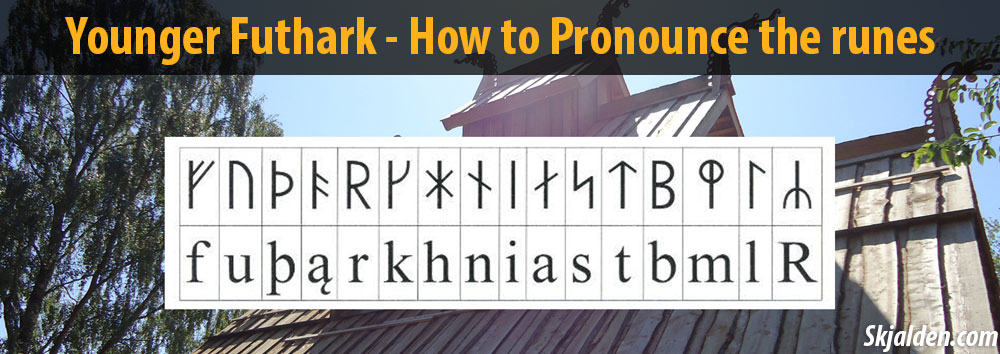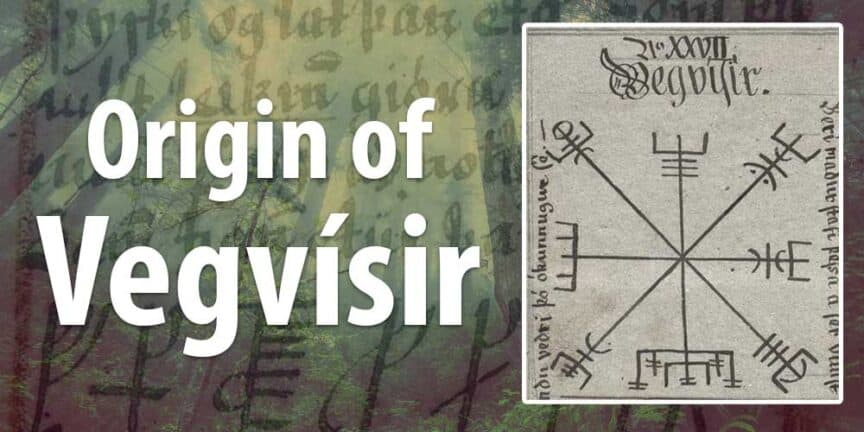What is the origin of the Vegvisir symbol (Icelandic: Vegvísir ), and how old is it? Can we find it depicted in the ancient caves of Scandinavia, in manuscripts, or do we have to venture out and explore the landscape in order to find depictions of it on the runestones, or has there been discovered some ancient artifacts from the blood-filled soil of the north?
“Vegvisir is an Icelandic stave that has been described and depicted as a rune spell in the Huld Manuscript from 1860 by Geir Vigfússon.”
Meaning of the Vegvisir Symbol
It is from the Huld manuscript, that we know the meaning of the symbol Vegvisir. “If this sign, called the Vegvisir (way-shower, or way pointer), is carried, one will never lose one’s way in storms or bad weather, even when the way is not known”. It also helps one find one’s way in life.
Icelandic: Beri maður stafi þessa á sér villist maður ekki í hríðum né vondu veðri þó ókunnugur sá.
The Vegvisir symbol originates from Iceland
It really should not come as a surprise that it was the Icelandic people who came up with the meaning of this symbol. Especially when we think about their landscape and the way the weather behaves during a typical day in Iceland.
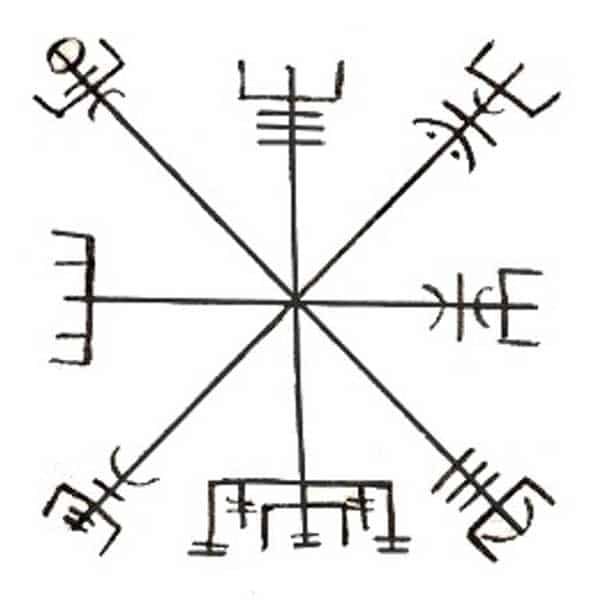
One moment it is raining, then the sun is shining, followed by snow, and before you know it ash is raining down from the sky and you are running screaming for your life in a random direction. Of course, the last part is only something tourists do, the Icelandic would probably be busy taking selfies while watching the lava run past their legs. To you, they would look like lunatics, but for them, it would just be another Friday.
The Vegvisir symbol is one of the Icelandic magical staves (Icelandic: galdrastafir), which according to the Huld manuscript is a Wayfinder. The Huld manuscript was written by Geir Vigfússon in 1860, in the small town of Akureyri, Iceland. The manuscript was assembled by using earlier published books containing magical staves, however, there are no depictions of the Vegvisir symbol prior to this manuscript.
It has also not been depicted on a runestone, there is no jewelry or artifacts with it, and it has not been described in any of the old sources. When I say old sources I talk about the old Norse sagas. I have also been to many museums that showcased objects from the Iron Age and the Viking Age and guess what, there was never anything that remotely looked like the Vegvisir symbol.
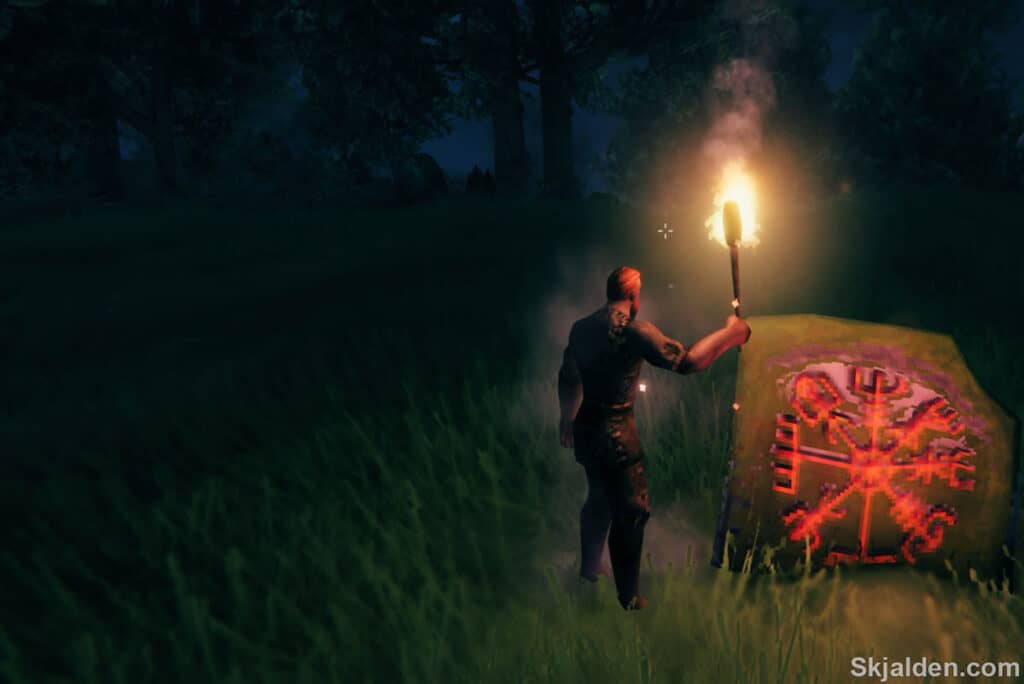
But how can that be, when this symbol which is quite literally plastered all over the web as a Viking symbol, for instance, it can be found depicted on various jewelry, in video games, within reenactment communities, painted on shields, and some people have even decided to get it as a tattoo, and yet, there are absolutely no sources that connect the Vegvisir symbol to the Viking Age.
This Runic Compass which allegedly is a magical symbol and consists of eight branches formed in a wheel-like shape must come from somewhere. Where did the author get this symbol from? Did he find scraps of paper in the attic, or was he told about it by other Icelanders who had passed down this knowledge within their family?
We know for a fact that magic was part of the Nordic culture, however, to which extent it was practiced is unknown. But there are various examples of its use in the Norse sagas, for instance, in Egil’s saga is the use of rune spells is used multiple times.
“Here set I up a curse-pole, and this curse I turn on king Eric and queen Gunnhilda. (Here he turned the horse’s head landwards.) This curse I turn also on the guardian-spirits who dwell in this land, that they may all wander astray, nor reach or find their home till they have driven out of the land king Eric and Gunnhilda”
“This spoken, he planted the pole down in a rift of the rock, and let it stand there. The horse’s head he turned inwards to the mainland; but on the pole he cut runes, expressing the whole form of curse.” (chapter 60)
We know that it was mostly women who were the religious leaders and conducted the rituals in society. These women were called a Völva, and they were so important and respected that they would often have close ties to the King and Queen. For instance, the Danish King Harald Bluetooth was often accompanied by a Völva when traveling around Scandinavia.
These rune spells, just like the sagas, were only passed down orally for hundreds of years after the Viking Age ended. But it is possible that spells also made it into books from the 13th century and forward, for instance, Snorri’s Edda was written in that century.
In the middle of the 15th century, persecution of witches began to take place throughout Europe, and many magic books perished in the flames of fear, sometimes together with their owners. But it is possible that some of the books survived the flames or that the knowledge was passed down in the shadows orally from master to apprentice.
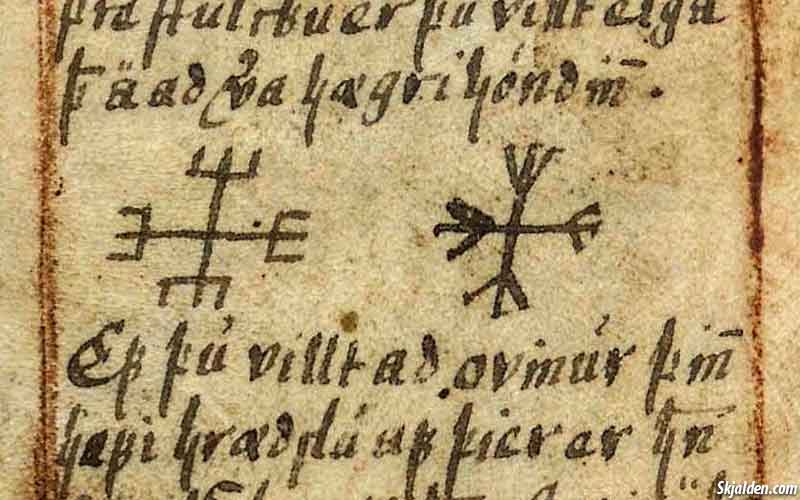
However, if some of the old magic books survived, then they are hidden, because the earliest Icelandic book of magic (Galdrabók) that we know of, is estimated to have been written between the late 16th century until the mid-17th century.
In the following centuries, more magic books were written in Iceland, however, these were clearly influenced by Christendom, which you can see by flipping through the pages, there are references to both Paganism and Christianity. This does not really come as a surprise to me, since the same goes for the runestones. For you see, most of the runestones were made after Christianity had made its entry into the North spearheaded by the elite of society.
Today, we can easily criticize the Icelandic people for not writing it down a bit sooner, or say that they could at least just have inscribed some of it on a runestone, which there are none of in Iceland from the Viking Age, at least to my knowledge.
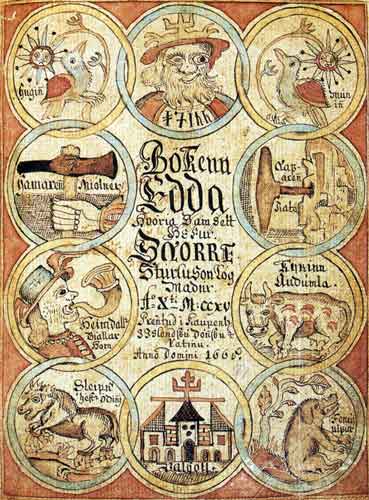
But it is the Icelandic people that we have most of our knowledge from. It is from Iceland that we have the Eddas, a bunch of stories in the form of sagas, but also the book of the Icelanders which contain a lot of useful knowledge for us today, and let’s not forget that Snorri Sturluson who also wrote about the monasteries in Scandinavia.
In many regards Iceland was a time capsule for hundreds of years, but still with some outside influence, but not nearly as much as in the rest of Scandinavia.
The Icelandic language is also far closer to Old Norse which is the language that the Vikings spoke. It can be a struggle for the Danes, Norwegians, and Swedes to read through some of the old sagas in Old Norse, a struggle that the Icelanders do not have to the same extent. We can read many of the words, and we can form an understanding of the text, but not in the same way as someone from Iceland.
So it is the Icelanders we have to thank for preserving a lot of our Viking history. But the Danes, Norwegians, and Swedes do also have a lot to put on the table, not in the form of sagas, but in the form of archaeological findings, such as runestones, jewelry, ships, and buildings. The Danes can also throw the book History of the Danes (Gesta Danorum) by Saxo Grammaticus on the table, but texts from the Viking Age are very scarce outside of Iceland.
While the Norse sagas were written down hundreds of years after the Viking Age ended, we do still to this day find evidence of their authenticity, for instance on runestones and jewelry dug up by our skilled archeologists, who I would like to send my gratitude for preserving history. So there are many references to the sagas in the form of objects, names of places, and traditions, which are important pieces to the puzzle.
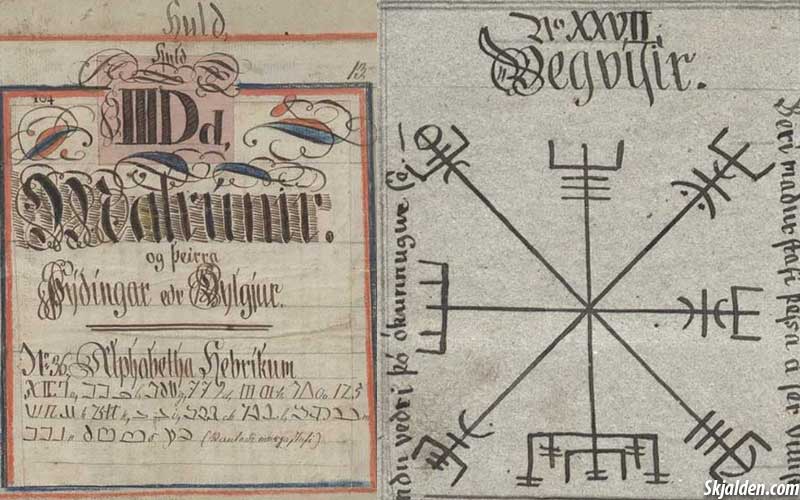
However, since the earliest description and depiction of the Vegvisir symbol is on page 60 in the Huld manuscript from 1860, I am inclined to think that it was the author who most likely created this symbol based on the design of other symbols. The lack of earlier sources just fills me with wandering thoughts and makes this symbol feel very strange and mystical.
Vegvisir symbol is not from the Viking Age
To put this Vegvisir symbol into perspective, the Huld manuscript is from when Abraham Lincoln became president-elect of the USA. Or if we look at Europe, it was four years prior to the Second Schleswig War (1864). A war where Denmark tried to defend itself against most of central Europe.
In the eyes of many Danes,’ this is very close to our own timeline at least emotionally, and when we consider that the first appearance of this symbol was only about 160 years ago, or in other words, 800 years after the Viking Age ended, it clearly can not be an ancient symbol by any stretch of the imagination.
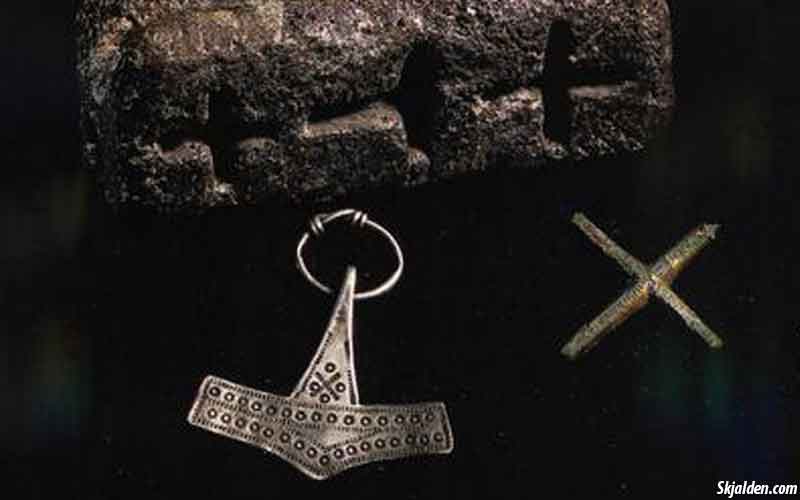
We also have to remember that Christendom and Paganism began to blend together, for instance, know that it took hundreds of years to get the Nordic people to convert to Christianity it was not done overnight, and we know that some of the blacksmiths had a mold that could be used to make both Thor’s Hammer and the Christian cross.
The Icelandic cross also called a wolf cross from the 10th century is also an example of that, a piece of jewelry that could be a combination of both the cross and Thor’s hammer. However, opinions are divided in this matter.
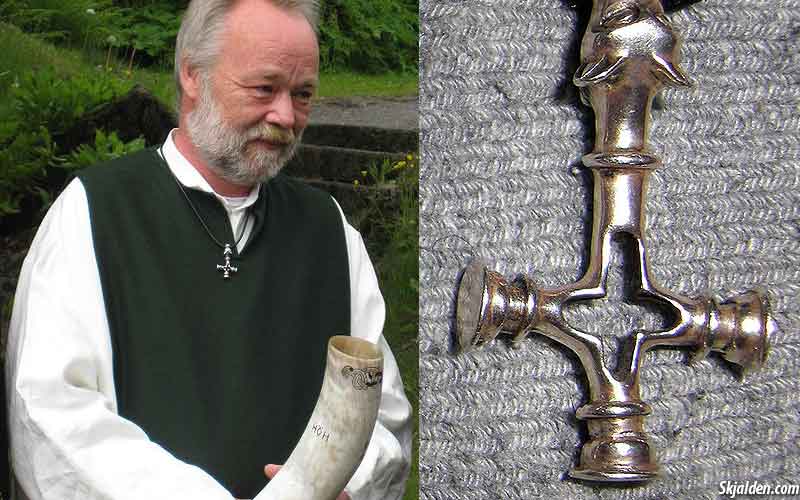
The blending of cultures was real, and we can also see that on the runestones, and as I pointed out earlier that is also the case in the books of magic. The two cultures blended together with the use of ink and swords, adopting Pagan rituals into Christianity to make it easier to convert the stubborn people of the North.
Another example of this was at the Yule celebration that took place in Norway during the 10th century when Harald Fairhair tried to implement Christian Values.
Yule would eventually turn into Christmas, which by the way was not a thing prior to the Christianization of Scandinavia. However, while Christmas has roots in Paganism, today, this holiday is blended together with elements of both cultures, or do you still eat horse liver and smear blood on pillars in your house during the celebration?
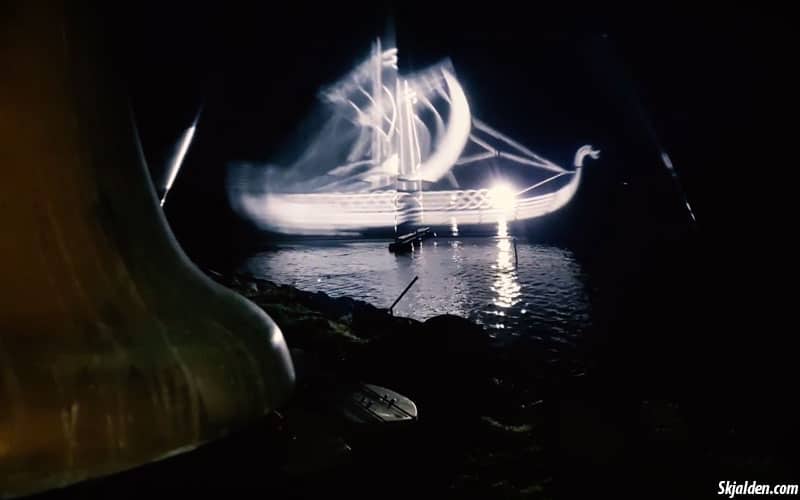
In my eyes is Vegvisir nothing more than a Fata Morgana, a ghost ship in the night, most likely invented, drawn, and described by the author himself. But I will leave the door ajar for someone who can explain something that I have thought for quite a while is very strange, are the symbols in The Key of Solomon or The Lesser Key of Solomon related to Nordic shamanism?
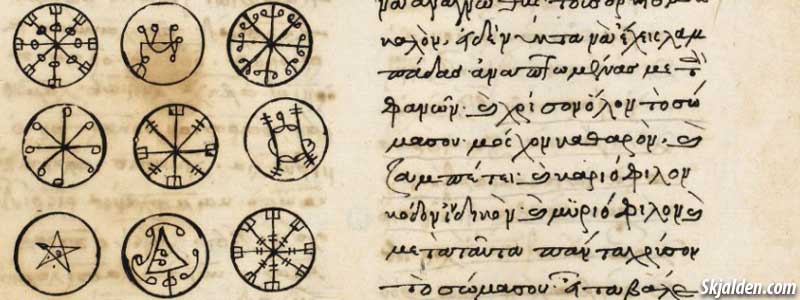
To me, many of these symbols look a lot like the Wayfinder, which makes me ask the question, from where is this symbol from. Is it really Pagan, or were symbols like this simply written down into books by Christians, maybe as a public record of what to look for when persecuting the pagans? I hope you can see what I mean by the blending of cultures because these are very odd to me when thinking about the Vegvisir symbol. They may not look exactly like it, but you can probably see my point, are they Christian, Pagan, or even Jewish?
The debate of the origin of Vegvisir will probably be ongoing long after my bones turn to dust unless we find proof that the symbol was in use prior to 1860. Maybe there are some Icelandic books of magic locked away in the basement of the Vatican. Perhaps there are some old books hidden in the walls of an old building in Iceland, or behind a waterfall, or maybe in some long-forgotten cave that was used to conduct rituals in the shadows of the night.
I place myself among the critics, especially because there is simply no evidence, in any form, anywhere. I am not locked in this belief, but I am always open to being presented with new evidence. So knock on those walls, and let’s see if the crumbling pages of the ancient past are hiding in your house.
I would like to encourage young minds to pursue the path of knowledge, dig into the past and revive the ancient knowledge of our ancestors, so we can all learn the truth, which at the end of the day, is all we really want.
I would like to add that if you like this Icelandic stave symbol from 1860 then go ahead and get a tattoo or buy some jewelry with it, but it is certainly not Viking, at least with our current knowledge.
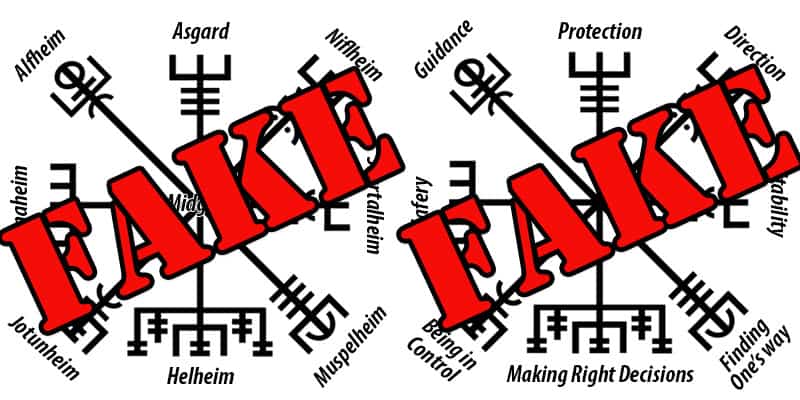
Today many people like to interpret symbols like this, and they come up with their own theories, which are based on their own imagination. I have seen people suggest that it is a Wayfinder to find one’s way in the nine realms, and on the image on the right, some people have taken it a step further. If you come across these two interpretations, then you should know they are fake, and there are absolutely no sources to back these interpretations up, and personally, I think they are ridiculous.
I would also like to add that sentences that are taken out of context, for instance, on land I pray to Christ, but on the stormy sea, I pray to Thor. Can not be attributed to Vegvisir, just because it seems to fit, that is an emotionally fueled argument. It’s like trying to squeeze into a tight pair of jeans, and then afterward concluding well I managed to get them on, so they must fit.
Before I sail into the night, I would like to remind everyone that if nobody carries the knowledge with them into the future, by writing books or teaching the children about their heritage, then it could be just one generation away from disappearing.
For further reading about the Icelandic stave symbols, I recommend the book Icelandic Magic: Practical Secrets of the Northern Grimoire by Stephen E. Flowers. This is an updated version of his previous book Galdrabók from 1989. Which is a translation of the Icelandic book of magic also called the Galdrabók. This is an Icelandic grimoire that has been dated to around pre-1650 CE. This small manuscript was written by three Icelanders and a Dane, and it contains a collection of spells, sigils, and staves.
Sources:
The Galdrabók, March 3, 2011, by Stephen E Flowers.
Icelandic Magic: Practical Secrets of the Northern Grimoires, 2016, by Stephen E Flowers.
Huld Manuscript of Galdrastafir Witchcraft Magic Symbols and Runes – English Translation
